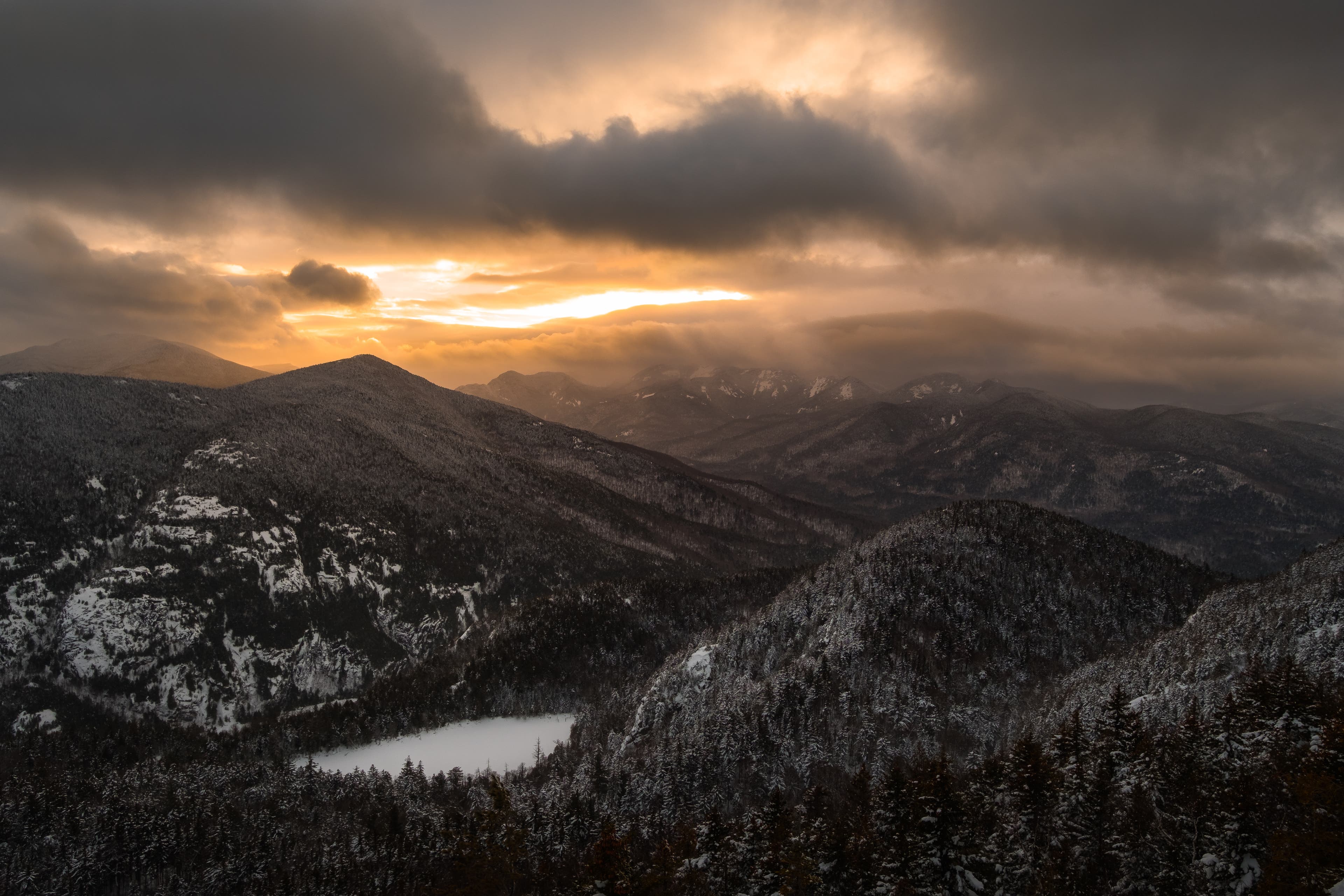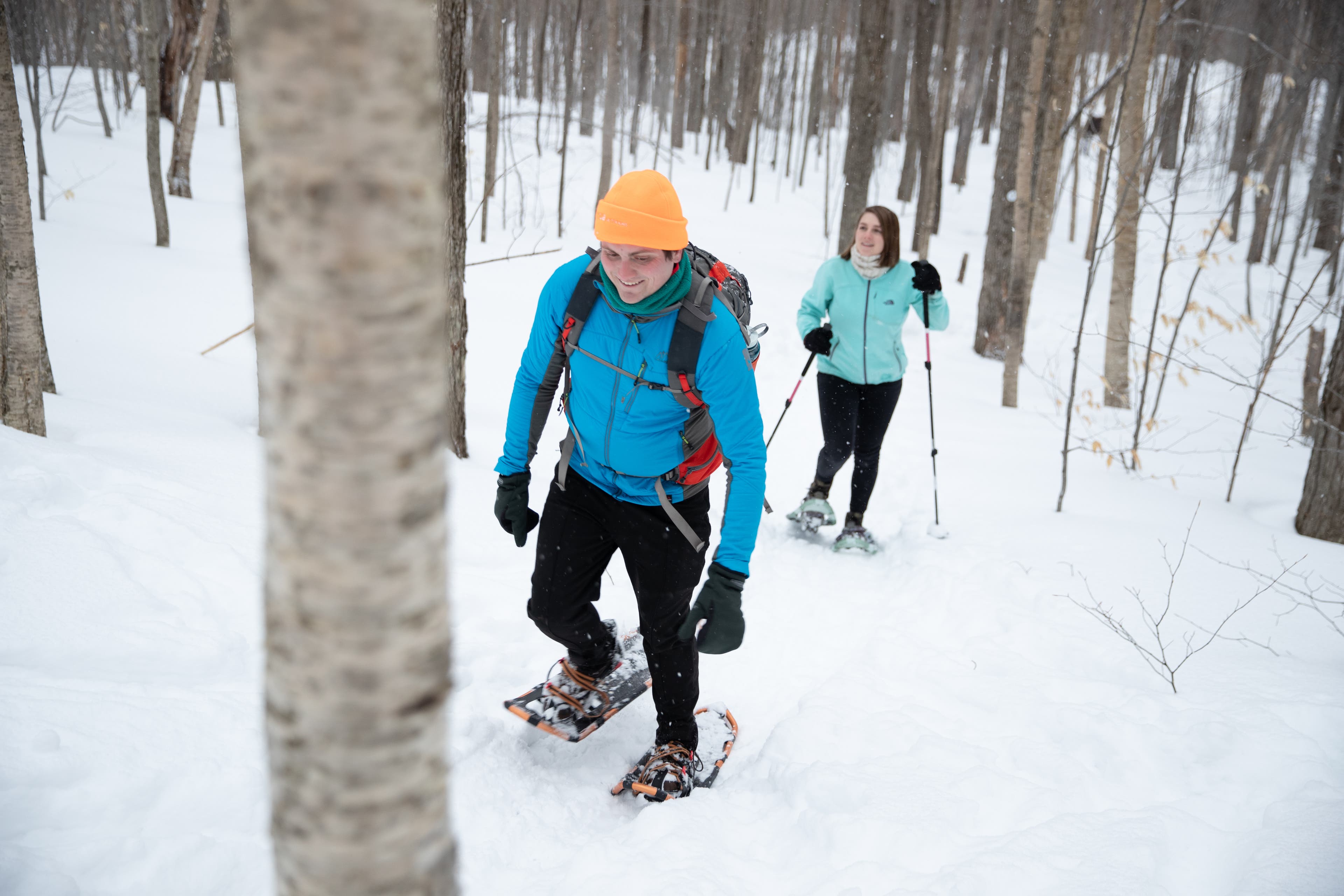Secrets Of The Adirondacks

Explore one of the country’s premier mountain ranges and enjoy off-the-beaten track solitude—if you know where to go. New York’s Adirondacks, with 2,000 miles of trails and 46 peaks over 4,000 feet high, rightfully attract lots of hikers. The wild terrain and tranquil communities make the largest park in the Lower 48 a must-go destination. But that doesn’t mean you have to share. Here are a few ways to go it alone.
Head South
Most High Peaks visitors start at trailheads in the popular northern region. Easy solution: Start in the south. In the Schroon Lake region, you’ll find several trailheads with direct access to deep valleys, dense forests, moss-lined creeks, and boulder-strewn slopes that lead to the High Peaks. Strong hikers can reach summits like 4,715-foot Mount Colden in a (very) long day, or you can basecamp in a lower area like Flowed Lands and day hike from there. Best trailheads: Upper Works (use this for Flowed Lands), Elk Lake (hike the Panther Gorge Trail or head into the Dix Range), and Boreas Ponds (a short, new route that affords a view of the Great Range).

Aim Low
If you’re not determined to stand on a peak above 4,000 feet—it’s just a number, right?—target lower summits and you’ll find a fraction of the foot traffic seen on the official High Peaks. Case in point: Pharaoh Mountain, at 2,556 feet high, has a 360-degree view of the Pharaoh Mountain Wilderness. Or take the Fire Tower Challenge, and climb five peaks in Hamilton County that are all below 4,000 feet but have great views—especially from the top of a fire tower! For more ideas on low-elevation hikes with high rewards, check out the Lake Placid 9ers.

Tackle a Thru-Hike
See the Adirondacks in their most primal state on the Northville-Placid Trail, a 133-mile route that runs south-north through the wildest parts of the park. The historic path, completed in 1924, gets only light use because it skips summits in favor of quiet valleys and remote lakes (though peak-bagging detours are easy). If you don’t have time for the whole thing, consider the section that bisects the isolated West Canada Wilderness, where you’ll see the Adirondacks just like they were when the park was first protected more than a century ago. The pristine landscape is a good reminder to follow Leave No Trace guidelines and leave this area—and everywhere you hike—exactly like you found it.
Take the Waterfall Challenge
From showstoppers like OK Slip Falls, which drops more than 200 feet, to miniature Griffin Falls with an inviting swimming hole at its base, the Adirondacks conceal waterfalls big, small, and beautiful. There are 19 cascades on the official Waterfall Challenge, which gives you plenty of reasons to cool off. Bonus: The 3-mile trail to OK Slip Falls is one of the newest paths in the park.